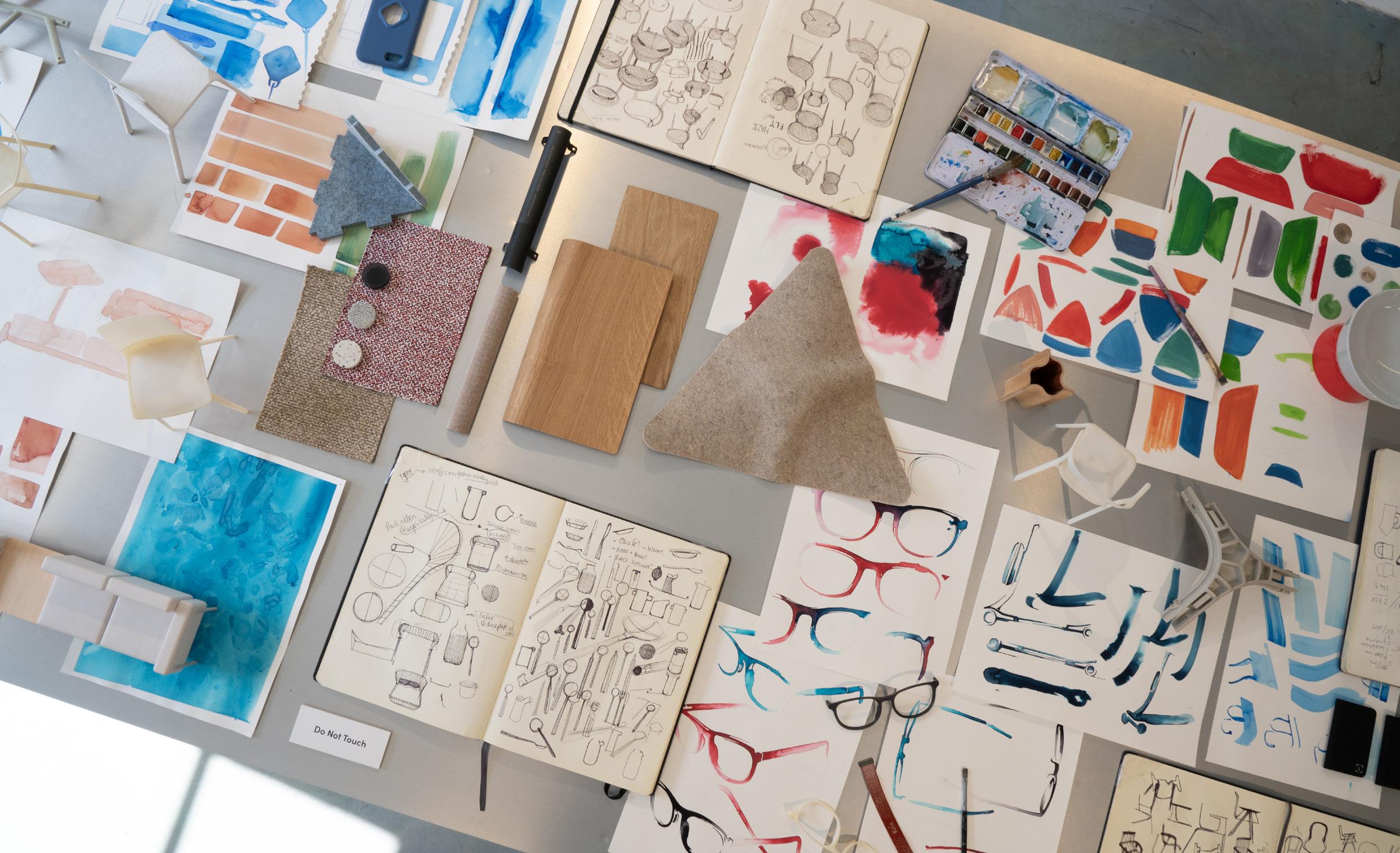
4 minute read
Design Voices: Benjamin Hubert
PHOTOGRAPHY Courtesy of LAYER INTERVIEW David Harrison
RETRO FUTURE
In a perfect alignment of the stars, British designer Benjamin Hubert presented a 10-year retrospective of his multidisciplinary design studio LAYER at Milan’s renowned fashion and design destination, 10 Corso Como. Titled 101010, the exhibition celebrated LAYER’s diverse range of projects while previewing six prototypes that address serious issues facing humanity over the next decade.

What brought about the change from your eponymous studio to LAYER in 2015, and the shift from furniture design to more technology-driven projects?
Benjamin Hubert: I come from an industrial design background and had some success with furniture and home products early in my career. However, after about five years, it felt a bit one-dimensional. I needed a platform to broaden the practice and pursue more meaningful design outcomes.
How does LAYER serve to expand your design language?
Benjamin Hubert: LAYER draws on my consultancy background but also champions high-quality craftsmanship. That’s why the 101010 exhibition encompasses everything from beautiful timberwork to tech-driven wearables. LAYER isn’t about my taste—it’s about solutions for how we live now and in the future. I love furniture, and you can see traces of that in the work we do at LAYER. However, each item we create has an insight, a reason to exist, and a challenge to solve.
Have you retained a connection with your past clients?
Benjamin Hubert: Only about two per cent of our output over the past decade has been furniture, but we have maintained relationships with brands such as Muuto, Andreu World, and Fritz Hansen. I enjoy reflecting on craft and passing it back to people—that’s something the industry risks losing sight of as technology becomes embedded in every aspect of life.
How do you approach technology in design?
Benjamin Hubert: We work extensively with technology and AI, but they are not the end goal—they are enablers. Ideally, they work in the background. If there’s one word that captures our approach, it’s intersection—the meeting point of the technical and the human.
How do you find the sweet spot between tech and people?
Benjamin Hubert: We design for people. That means things should be softer, warmer, and more welcoming. I appreciate minimalism and precision, but we always temper that with tactility and a sense of humanity. That combination is what makes design connect.
Why do companies like Bang & Olufsen, who already have design teams, come to LAYER?
Benjamin Hubert: They came to us because LAYER straddles furniture and technology, which in the case of B&O is their niche. By working with an external studio, they gain variation, inspiration, and marketable assets. Brands like B&O bring deep technical knowledge; we offer new approaches and fresh storytelling.

With today’s rapid change, there is a risk of devaluing design. We need deeper conversations—beyond mere appearances or practicality—to encompass emotional responses and environmental impacts.
– Benjamin Hubert
Despite Brexit, your studio remains based in London. Why?
Benjamin Hubert: Britain is known for engineering, and we benefit daily from that problem-solving mindset. Most of our work is conducted in the US, Asia, and parts of Europe, but London remains a key part of our identity. It’s multicultural, alive with music, fashion, and the arts—and it attracts global talent, which helps our studio thrive.
Your studio is also involved in brand building and in some cases fundraising—why branch into those areas?
Benjamin Hubert: It’s a cliché that design is purely a creative endeavour. In reality, design links creativity with commerce. Clients want beautiful outcomes, but they also want financial success. I’m deeply interested in both the business of design and the design of business. We conduct financial modelling, market mapping, and strategic analysis before beginning the design process. That’s how you create a lasting impact.
Where is the industry heading, and do you have any concerns?
Benjamin Hubert: With today’s rapid change, there is a risk of devaluing design. We need deeper conversations—beyond mere appearances or practicality—to encompass emotional responses and environmental impacts. At Milan Design Week, brands often use designer names to garner publicity. In 101010, we reversed that by showing the brands we’ve collaborated with. The old model—designer as stylist—needs to evolve. The world has undergone significant changes since the 1960s and 1970s. To us, design should be useful and better than what came before. It’s a tool for change, not just more stuff for the sake of it.











